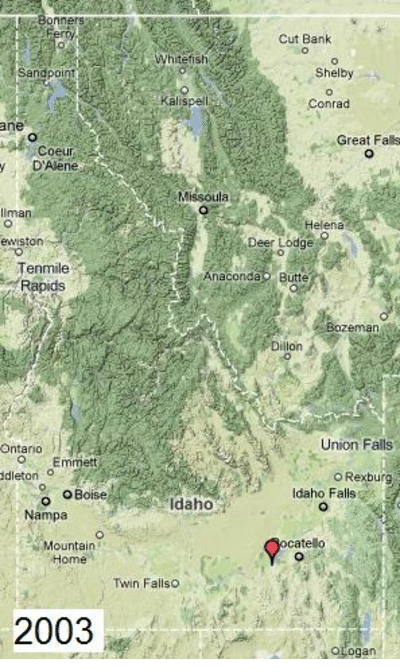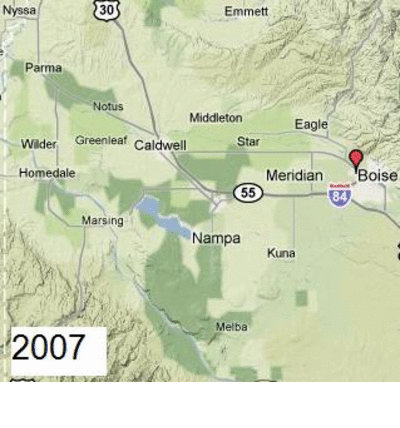 |
| Red-naped Sapsucker - this poor little tree hardly had a square inch without a sap well on it. I'm surprised it looks like a perfectly healthy tree. |
Some friends of ours have a family cabin in Round Valley, Idaho. Round Valley is just north of Smiths Ferry and just south of Cascade. I had never been birding in this area before, but it certainly merits the title of an Idaho Birding Hotspot.
Jason Talbot, his wife Colleen, and their seven cute little girls invited my family to spend a long weekend with them with all kinds of side adventures which will be featured on the next couple of posts. Jason was a birder as a kid and hanging around me has reawakened the monster in him. The birding around their cabin was spectacular!
The first night there, we did a little owling by playing a variety of owl calls using Stokes Field Guide to Bird Songs. Within a few minutes, we had a Northern Saw-whet Owl calling back to us. It approached to with 20 feet of the cabin deck, but we never did see it.
 |
| Mountain Chickadee - notice the white eyebrow? That is the quickest and easiest way to i.d. this fun chickadee. |
My quest was to see my first Pileated Woodpecker which Jason had recently seen in the yard of the cabin. That first morning we heard the infrequent heavy drumming along with the distinct call of the Pileated Woodpecker. We did our best to follow the sound through the woods until we came to the no trespassing sign on property line. We knew we were close. If we could just see through that one clump of trees...then the neighbors two dogs detected us and starting barking up a storm. The barking sent one Pileated Woodpecker flying up out of the trees, offering me my only positive though unsatisfying glimpse at my target bird. We did not hear or see Pileateds the rest of the trip. The other birds were so wonderful that I did not leave disappointed.
 |
| Three young Red-naped Sapsuckers in the one little tree. |
Saturday morning was very birdy. I added Least Flycatcher to my life list. There were several warblers moving through the area, Lincoln's Sparrows and even Ruffed Grouse. Saturday evening however was very light on bird numbers, but still yielded one of those spectacular birding moments that I'll never forget.
We walked along the dirt road loop that encompassed three properties including the Talbot's cabin. At the far edge of the loop we watched a couple Swainson's Thrushes among the pines and aspens at the lower end of a lush ravine. Suddenly, a bird flew across the dirt road twenty yards ahead of us and perched on a pine bough right at eye level. I put my binoculars on it and stammered out a loud whisper "V - Va - Va - VARIED THRUSH!"
"No way! You're kidding, right? Where is it?" Jason questioned thinking I was just playing a mean joke.
The Varied Thrush was at the top of Jason's list for birds he definitely wanted to see. I had had two previous in-flight sightings of this really awesome bird, but nothing even 1/100th as amazing as what I was now seeing. I really wanted Jason to see it before it flew off. I struggled to find landmarks by which to guide him to it. Those frustrating seconds felt like eternity, but finally Jason located the Varied Thrush in his optics. The bird was very obliging and remained perched for well over a minute. We enjoyed long looks and burned the image into hearts and minds. It was in perfect textbook plumage, just like the cover of the western Sibley guide. I didn't have my camera on me, which I kind of lament, but then again, perhaps the moment was to sacred to photograph anyway (plus the lighting was terrible). A day later, both Jason and I are still enjoying the afterglow of such a great sighting.
 |
| Having fun on the huge swing. That first drop makes your stomach come up through your throat. |
 |
| Me with my youngest Claire. |


















































